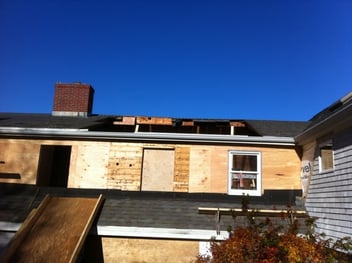3 Min Read
Game Changer For Homeowners and Trades People

Starting on Earth Day: April 22, 2010, a new nationwide law intended to protect children and adults from lead poisoning will take effect.
The impact will be broad. Prior to 1978, paint that contained lead was commonly used on both the interior and exterior of homes, schools and workplaces. Over time, elevated levels of lead were discovered in children and pregnant women. The culprit was found to be ingestion of lead paint chips as well as dust containing high levels of lead. Action was taken to ban the use of residential products that contained lead.
Since the implementation of that law, the EPA has compiled new regulations which will take effect on Earth Day. The restrictions covered by the new law govern how work can be performed on homes built prior to 1978.
Dust is a Larger Threat
When I recently attended the Certification course for the EPA’s Lead Safety for Renovation, Repair, and Painting, I, along with the other attendees was surprised to discover that lead paint chip ingestion is the culprit in only a small number of cases of lead poisoning. The primary transfer of lead occurs when lead contaminated dust is inhaled or otherwise ingested.
The course instructor pointed out, that when you operate a double hung window that has been painted with lead paint, the sashes rubbing together, create a small amount of dust that will add up over time and will contaminate the entire room. The amount of lead that can cause brain damage or learning disability's in children, problems for pregnant women is very small.
New Rules Very Inclusive
The EPA wants a large number of people to comply under with the requirements of the law. For example, if you are a property owner who performs your own work on your Pre-1978 rental property, you are required to be certified by the EPA to perform the work . You will be required to follow the strict work procedures. The same will apply to any remodelers, plumbers, electricians, painters and so forth. Even simple window replacements of any kind are covered under the new law.
Workspace Bubble
In the Certification training, we were required to engage in hands-on methods of containment. Prior to starting any work, workers will have to dress in disposable coveralls that they step into leaving only their face exposed. Then, they will have to put on latex gloves followed by work gloves. Finally they either put on a respirator or a properly rated dust mask.
In the workspace, all floors have to be covered by plastic at specified distances from the work area. All items such as furniture not removed from the room need to be covered and completely taped off to create an air tight barrier.
Entrances to the room are required to be sealed with a plastic barrier with additional flaps on both sides. A slit is cut in the center of the middle barrier with which people and materials will be passed through. The EPA requires that a bubble be created to avoid contamination of adjacent areas. On the exterior, the EPA will require plastic extending out from and sealed to the house to catch any lead contaminates.
All debris from the workspace, will be required to be bagged or wrapped in plastic and sealed off before placing in the dumpster. It will take a lot of plastic bags to dispose off drywall from a typical room. Not to mention, that the drywall will have to be broken up so that it will fit into the bags.
Throw The Brooms Away
No longer can jobs be just left broom clean. If anything, the EPA would prefer that we throw our brooms away and solely use professional grade HEPA Vacuums. Sweeping can create air borne dust.
After a thorough cleaning of all walls, floors and other surfaces that can contain dust, a cleaning verification process must be followed that can require multiple cleanings before the area is considered clean per EPA standards.
Costs Will Increase
Training, certification, new equipment will add a small increase in project costs. However, significant cost increases will occur in following the procedures mandated by the EPA. Work will slow to a crawl as containment areas are created and worked in.
Imagine an employee wearing a full body suit with a respirator, trying to perform demolition work in a non-vented space in the middle of July, wrapping all the debris in plastic and passing it through a slit cut into the plastic barrier. Some project costs could double or triple as a result of the increased labor.
$37,500 Fine
The EPA can assess fines up to $37,500 per violation in addition to other fines. They have also made it clear that they will play hardball in enforcing the law as they want compliance to take place as rapidly as possible.
Avoid Risks
It is possible that some contractors will ignore the law and continue with business as usual. They will in turn, provide quotes to homeowners that will be lower then any quotes from certified and compliant firms. As most homeowners will be unaware of the new law, they unknowingly place their family at risk from lead exposure, they may also place their pocketbooks at risk if the EPA finds out that work is been done by a non certified firm. The project will get shut down and the money that the homeowner has paid to the contractor will most likely be passed along to the EPA to pay fines.
Lead Law, Here to Stay
This new law has been in the works for 2 decades and has the backing of several influential advocacy organizations. It will take some time for the dust to settle as the impact of this law is assessed and adjusted to. It has been made clear by the EPA that we need to change our work practices for the benefit of our children's health.

.png?width=350&height=350&name=@designremodel%20home%20remodeling%20cost%20guide%20on%20cape%20cod%20(1).png)


